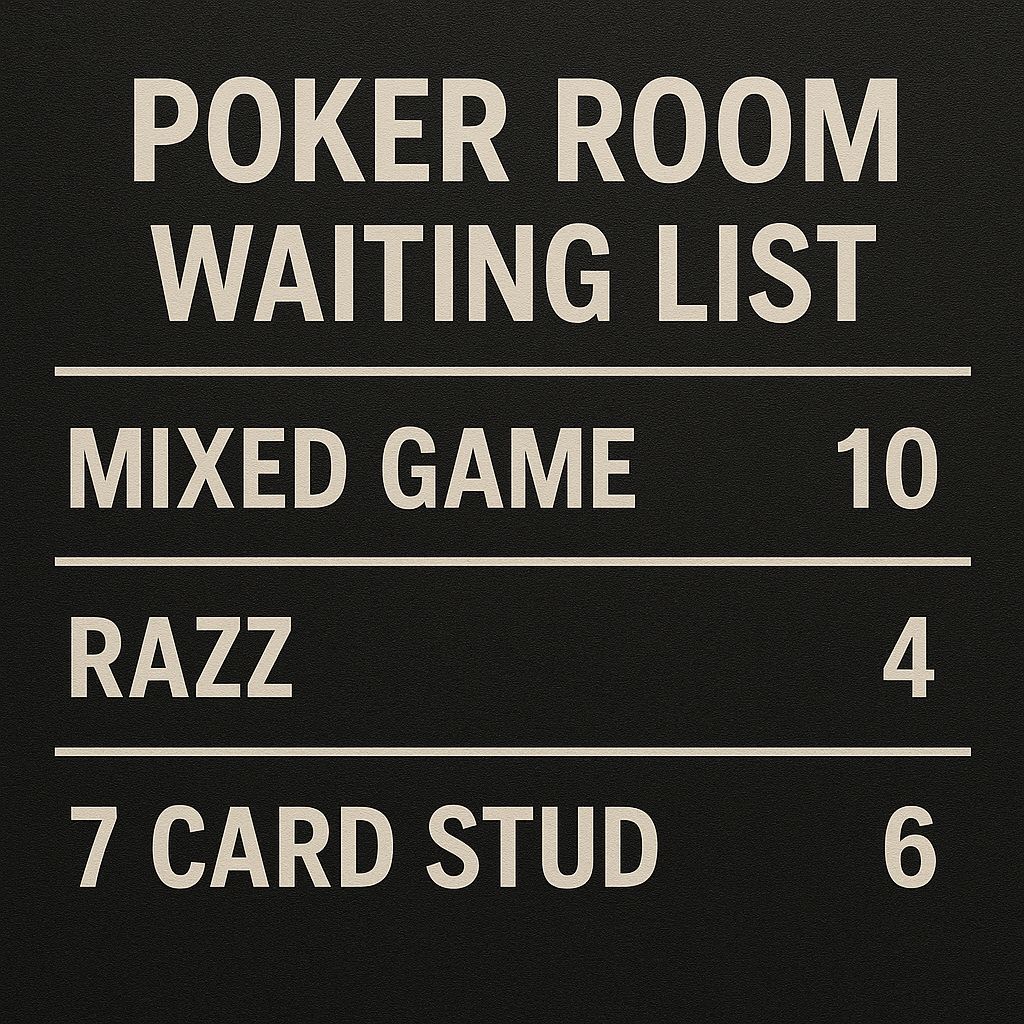
Mixed games are poker formats that rotate through multiple variants, such as Hold’em, Omaha, Razz, and Stud, within a single session. These formats challenge a player’s ability to adapt, recall game-specific strategies, and maintain a well-rounded skill set.
This comprehensive guide will detail the rules, strategic principles, advanced tactics, and practice methods required to add Stud and Razz to your poker arsenal. By the end, you’ll have the tools and confidence to tackle H.O.R.S.E., 8-Game Mix, and other mixed-game formats.
Why Learn Stud & Razz?
- Diversification: Relying solely on Hold’em allows specialized opponents to exploit your narrow skill set. Stud and Razz improve your overall poker IQ and adaptability.
- Softer Fields: Many mixed-game sessions attract players less familiar with stud variants, presenting opportunities for value betting.
- Skill Development: Stud games demand strong memory, tracking upcards, and Razz encourages precise low-hand evaluation.
- Profit Potential: Mixed games generally carry higher rake or antes; skilled players can overcome this through superior play.
In-Depth Overview of Seven-Card Stud
Game Structure & Betting Rounds
In Seven-Card Stud, each player ultimately receives seven cards, three down and four up. There are five betting rounds:
- Third Street: 2 down, 1 up. Lowest upcard posts bring-in.
- Fourth Street: 1 upcard dealt, betting starts with highest upcard.
- Fifth Street: Another upcard, followed by a betting round.
- Sixth Street: A fourth upcard is dealt, then betting.
- Seventh Street (River): Final downcard and a last round of betting.
- Showdown: Best five-card poker hand wins.
Starting-Hand Selection & Examples
Premium Hands:
- Big Pairs: A♠-A♣-K♠
- Three-Card Gutshots: 7♣-8♦-9♠ (suited)
Folding Hands:
- Disconnected low cards: 4♦-7♣-9♥
- Small pair + weak upcard: 3♠-3♥-8♦
Strategic Principles & Practical Tips
- Memory & Card Removal: Track seen cards to estimate your odds.
- Position Adjustments: Play tighter out of position.
- Bet Sizing: Half-pot for draws, full-pot for value.
- Opponent Profiling: Adjust against loose or tight players.
In-Depth Overview of Razz
Game Structure & Objective
Razz uses the same deal structure as Seven-Card Stud. The goal is to form the lowest five-card hand. Aces are low, and straights/flushes don’t count. Best hand: A-2-3-4-5 (the wheel).
Starting-Hand Selection & Examples
Premium Hands:
- A-2-3 (e.g., A♠ hidden + 2♣, 3♦ up)
- 2-3-4 (two concealed)
Fold Hands:
- Any pair (even 2-2-5)
- Upcards 8 or higher
Strategic Principles & Practical Tips
- Bring-In Awareness: Know when to raise or call based on your upcards.
- Board Texture: Track which low cards are still live.
- Aggression: Push edges on Fourth Street.
- Pot Odds: Chase only with +EV draws.
- Value Bet: Thin value betting on later streets is profitable.
Transitioning to Mixed Games
Popular Mixed-Game Formats
- H.O.R.S.E.: Hold’em, Omaha Hi-Lo, Razz, Stud, Stud Hi-Lo
- 8-Game Mix: Includes 2-7 Triple Draw, Badugi, Big O, etc.
Bring-In and Dealer Button Nuances
- Know which variant dictates bring-in (high vs. low card)
- In mixed games, bring-in changes with each variant; stay alert
Bankroll Management & Game Selection
- Cash Games: Maintain 30-50 buy-ins
- Tournaments: At least 100 buy-ins due to variance
- Start Low: Begin with $0.25/$0.50 limits
Advanced Mixed-Game Strategy
Multi-Variant Hand Reading
- Develop routine for every street
- Translate Stud memory to other variants
Bet Sizing, Frequency & Balance
- Avoid predictability
- Balance bluffing and value
Exploiting Opponent Tendencies
- Tag Hold’em specialists who chase too much
- Plan check-raises on Sixth Street against bluffers
Mental Game & Tilt Control
- Manage fatigue between game shifts
- Recognize tilt and reset focus
Practice, Study & Improvement
Online Tools & Simulators
- Bluffing Monkeys, Equilab for simulating hands
- Play micro-limits for volume and confidence
Hand History Review & Analysis
- Reconstruct hands, analyze ranges
- Use forums like TwoPlusTwo for discussion
Live Play & Physical Tells
- Observe player behavior across formats
- Practice discreet note-taking
Community & Coaching Resources
- Join Discord/Telegram study groups
- Hire private coach for specialized formats
Conclusion
Adding Seven-Card Stud and Razz to your poker toolkit elevates your adaptability, sharpens your memory, and enhances your ability to exploit less versatile opponents.
By rigorously studying starting-hand selection, betting dynamics, and opponent profiling, and by practicing both online and live, you will confidently navigate H.O.R.S.E., 8-Game Mix, and other formats.
Begin at manageable stakes, track your progress, and steadily advance. With disciplined study and practice, mixed games will not only diversify your poker experience but also provide a consistent source of profit.
